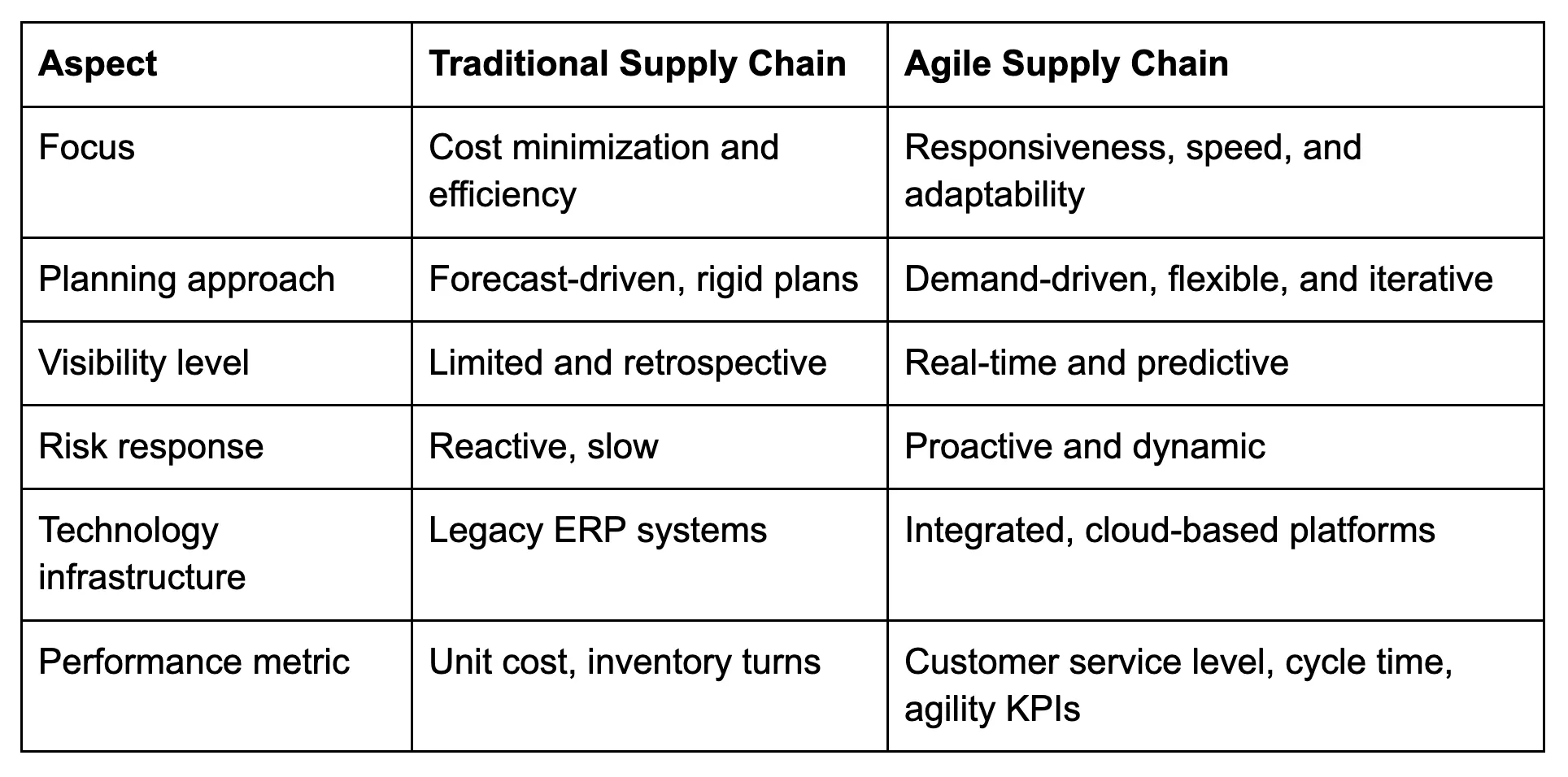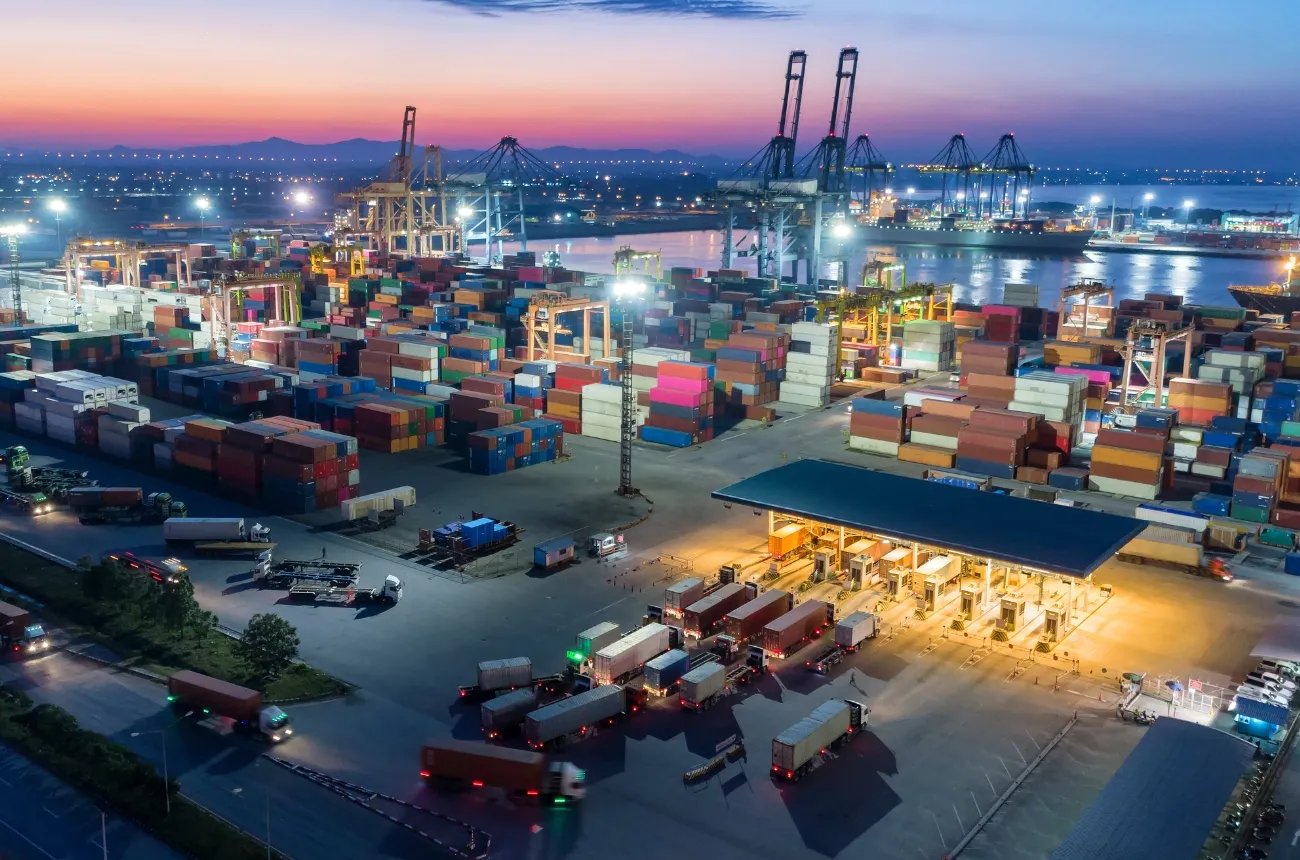Key Points
- Agile supply chains are designed for speed, responsiveness, and adaptability in volatile environments
- Compared with traditional models, agile supply chains prioritize flexibility over cost optimization alone
- Real-time transportation visibility is a foundational capability for enabling agility by providing live data, predictive ETAs, and proactive risk insights
- Shippeo empowers supply chain agility through multimodal visibility, high data accuracy, and real-time collaboration tools.
Understanding the Agile Supply Chain Model
An agile supply chain is one that can rapidly respond to changing market conditions, customer demands, and external disruptions. Unlike traditional linear supply chains - optimized primarily for cost efficiency and predictability - agile supply chains are built around flexibility and speed.
This shift is being driven by increased global volatility: geopolitical tensions, climate-related disruptions, supplier shortages, and unpredictable consumer demand patterns are all pressuring supply chains to evolve. This no doubt explains why, according to a Gartner survey cited by Chain Store Age, 87% of supply chain leaders plan to invest in agility within two years.
Agility doesn’t just mean faster transportation or leaner operations, however. It means having the real-time insights and digital infrastructure to adapt, replan, and act with confidence at any moment. That’s why industry leaders like Inbound Logistics and Oracle point to agility as a key differentiator for today’s supply chain organizations.
Core Principles that Drive Agility in Supply Chains
- Speed: Agile supply chains shorten lead times and enable quicker decision-making across the entire logistics network. This means having the capability to execute rapid changes in sourcing, routing, or inventory allocation in response to shifts in demand or disruption
- Flexibility: An agile network can pivot between suppliers, carriers, or transport modes when needed. This is particularly critical in global or multimodal environments where bottlenecks can arise quickly
- Responsiveness: Agility isn’t only about reacting fast - it’s about reacting smart. This requires real-time visibility into shipments, inventory levels, and potential risks so that actions are based on data, not guesswork
- Collaboration: Agile supply chains foster strong communication and alignment between shippers, carriers, and partners. This collaborative mindset supports shared accountability and faster problem resolution
- Technology Enablement: Cloud platforms, AI, and real-time transportation visibility software provide the backbone for agility. These tools deliver insights and automation capabilities that manual systems can’t match.
Agile Supply Chain vs. Traditional Supply Chain Models
To understand the value of agility, it helps to compare it with traditional models:

Agility doesn’t eliminate the need for efficiency, it prioritizes resilience and adaptability as strategic advantages. In today’s unpredictable landscape, companies that can pivot quickly are more likely to maintain service levels and capture market share.
Benefits of Building an Agile Supply Chain
Organizations that invest in supply chain agility report a wide range of benefits:
- Faster decision-making based on real-time data and predictive analytics
- Improved resilience in the face of supply or transport disruptions
- Enhanced customer service due to better on-time delivery performance
- Shorter lead times across both sourcing and distribution
- Greater flexibility in inventory positioning and transportation planning
- Reduced stockouts and excess inventory through dynamic replenishment
- Better alignment with market demand and consumer behavior
- Increased competitiveness in volatile sectors like retail, automotive, and manufacturing
- Lower risk exposure to geopolitical or environmental shocks
- Higher ROI from technology investments through operational gains.
How Real-Time Visibility Supports Supply Chain Agility
Real-time transportation visibility (RTTV) is one of the most critical enablers of agility. Without access to live data on shipment status, location, and estimated time of arrival (ETA), organizations are left reacting to delays after they occur. Visibility provides the foresight and context needed to act ahead of disruption.
RTTV platforms such as Shippeo’s are designed to deliver this agility at scale. Here's how:
- Predictive ETA Models: Shippeo’s AI-powered models offer highly accurate ETAs, even across complex intermodal flows. This allows planners to anticipate delays and reallocate resources proactively.
- Multimodal, Global Tracking: From road and rail to ocean and air, Shippeo provides end-to-end visibility on a single platform, enabling agility across every leg of the transport journey.
- High Data Accuracy: Agility depends on trust in the data. Shippeo ensures data reliability through a robust network of prebuilt integrations and SLAs for accuracy.
- Proactive Risk Management: With real-time alerts and contextual insights, users can quickly assess which shipments are impacted during black swan events, such as port closures or strikes.
- Control Tower Integration: Unlike other solutions, Shippeo is fully embedded into supply chain control towers—ensuring that visibility data is not just informational, but actionable.
By connecting the dots between transportation events, supply chain plans, and customer expectations, Shippeo empowers shippers and carriers to pivot with speed and confidence.















